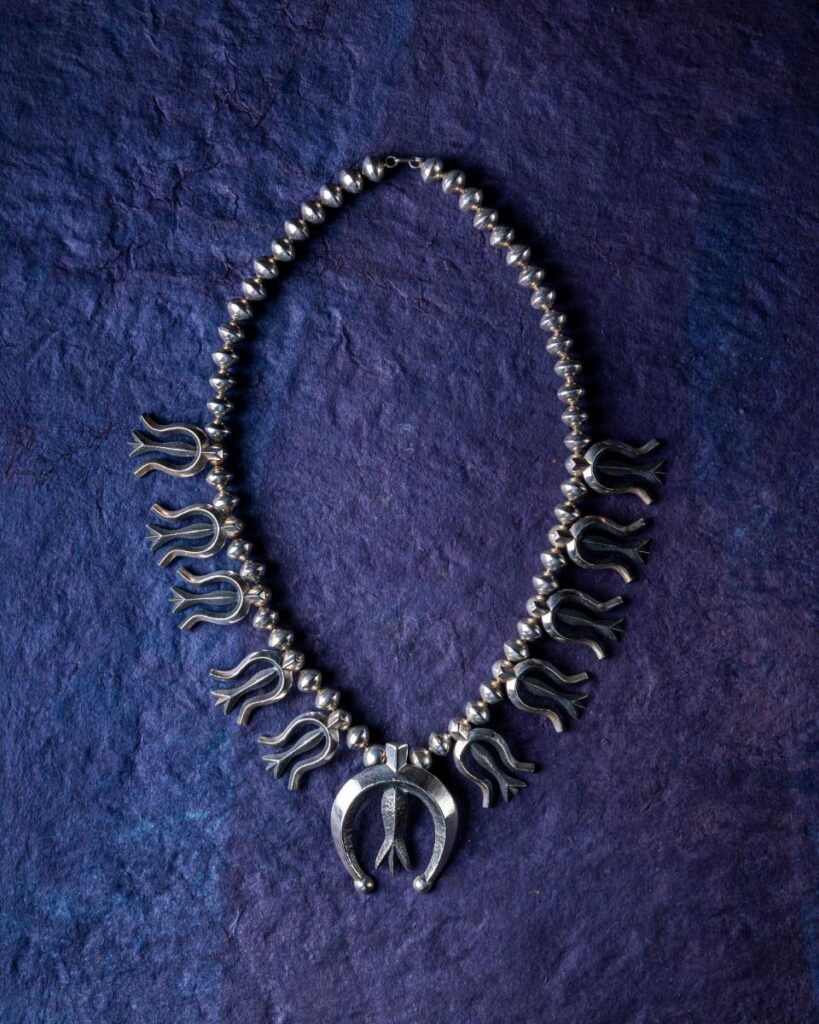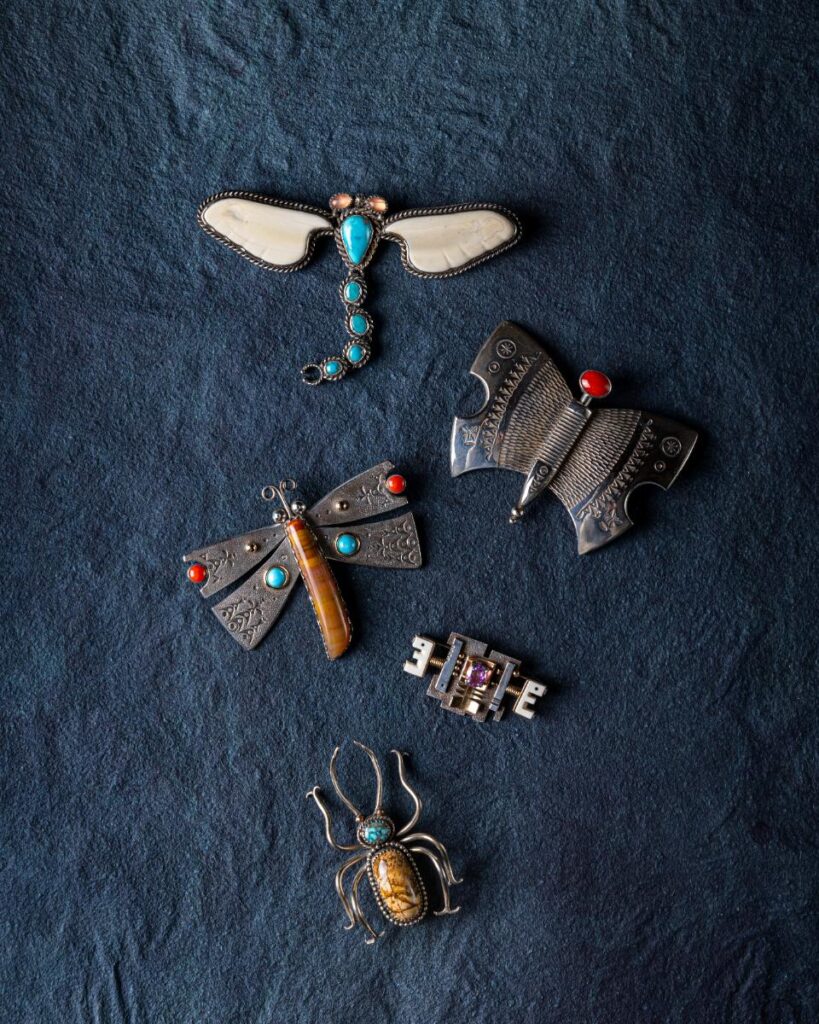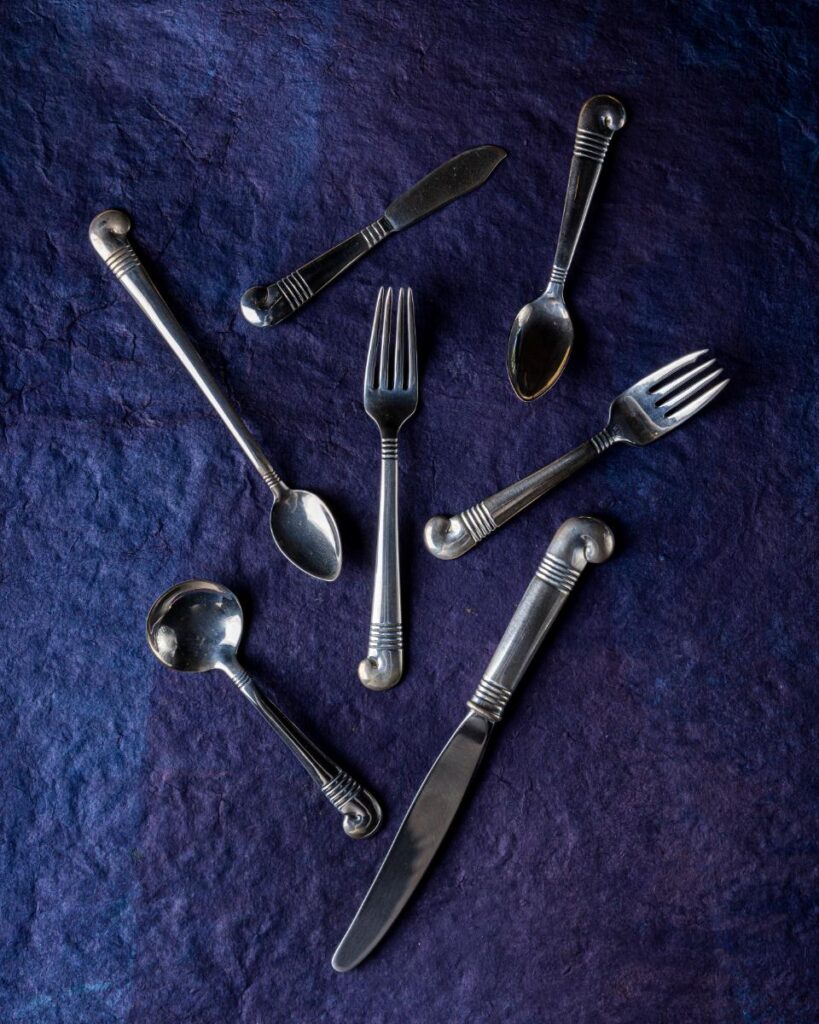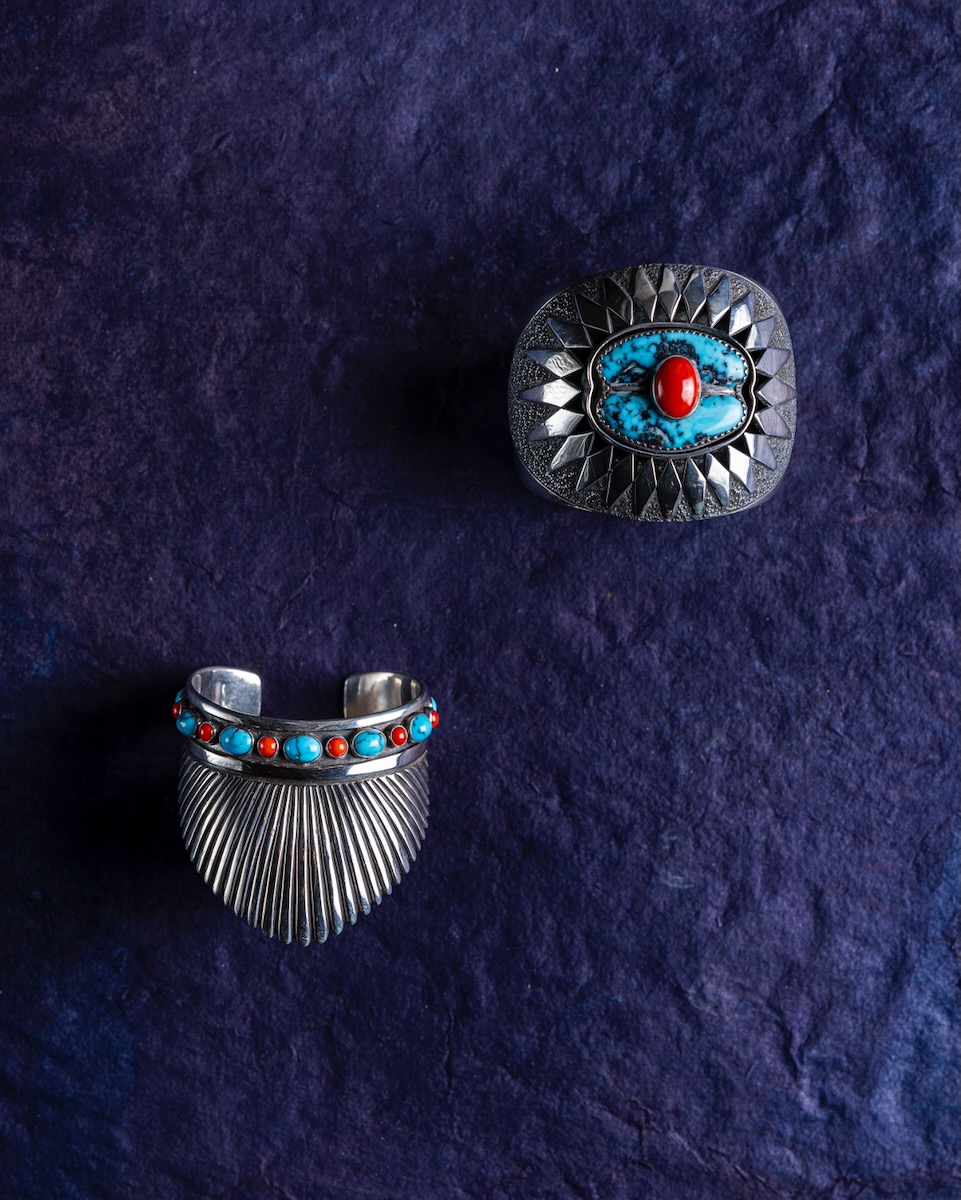For those writing about jewelry in the 20th century, the mid-point is usually seen as the moment of modernism. But what are the features of modernism? The world over, modernism rearticulated traditions, reconfiguring them in new ways. Modernists were interested in the present, rooted in real things and real people, but had an eye to the future. An optimistic movement with both local and global impact, one that should not see modernism as singular (with a capital M) but as an inclusive plurality. As a global movement, emerging modernisms were concerned with understanding place and the world. In the United States, modernism held a particularly invigorating promise for jewelry. Modern jewelers freed themselves from the constraints of conventions around preciousness and emphasized craftsmanship. They redefined jewelry as a skilled experiment in aesthetics, forms and techniques.
This verve can be seen in the dazzling work that emerged from the hands and imaginations of Native jewelers from the 1940s onwards. This marks a moment when Native jewelry worked in boutique jewelry shops and family concerns which opened in a variety of locations including cities such as Tucson, Scottsdale, Albuquerque, and Santa Fe.
Modernism and Native American Jewelry
Maybe a pivotal moment was the Indian Art of the United States, the landmark exhibition held at the Museum of Modern Art, New York in 1941. In the section called Indian Art for Modern Living, an array of cast and stamped Navajo jewelry, and raised silverware, was persuasively presented as sophisticated luxuries, a definition of American taste. The range of the work that emerged during this period, its creativity and vigor, are a continuous source of reference for contemporary jewelers who marvel at the breathtaking work of Kenneth Begay (Navajo, 1912-1977) and Lewis Lomay (Hopi, 1913-1996). This generation of Native jewelers ambitiously embraced the potential of their time.
Begay and Lomay are but two figures among many whose careers denote the capacity of Native jewelers of the mid-20th century to address modern American sensibilities while consistently gesturing towards the deeply rooted aesthetics and techniques of traditional jewelry. The jewelry they made is impeccably balanced as well as faultlessly elegant. Their pieces succeed in the highest aspirations of any jewelry, in terms of beauty and wearability.
Modernist Native American Jewelry From The Wheelwright Museum
Accessories and More

This tufa cast and fabricated necklace is by Navajo jeweler Billie J. Hoskie (Navajo, n.d). This necklace represents jewelry made under the umbrella of the Navajo Arts and Crafts Guild from the early 1940s. The piece which won first prize at the 1967 Gallup Inter-tribal Ceremonial is an interpretation of the traditional squash blossom necklace. Gift of George and Peggy Wessler.

Heirs to mid-20th century work, Liz Wallace (Navajo/Washoe/Nisenan Maidu, b.1975) and Norbert Peshlakai (Navajo, b.1953). Wallace cuts stone and then uses silversmithing techniques to create form and movement in her beetles and dragonflies. Peshlakai uses multiple stamps to create intricate designs akin to textiles while highlighting the dazzling nature of insects’ wings. Wallace’s stag beetle and dragonfly pins are gifts of Sally Martinez. Peshlakai pins are gifts of Marcia Berman, Martha Albrecht, as well as an anonymous donor.

Silverware with the makers marks of Kenneth Begay, Allen and George Kee with a hogan hallmark. From the mid-1940s to the 1960s Kenneth Begay worked with his cousins Allen (Navajo, 1916-1972), George Kee (Navajo, 1930-1980) and Ivan (Navajo, 1936-1982) for John C. Bonnell, who owned the White Hogan shop initially located in Flagstaff. In 1950 the White Hogan moved to Scottsdale and became a destination sought out by collectors. The shop produced modern flatware and hollowware in addition to jewelry. The pieces were given to the Wheelwright Museum by an anonymous donor.
Bracelets

Above are bracelets in the Wheelwright’s permanent collection by master silversmith Kenneth Begay (Navajo, 1913-1977). The cuff bracelet with silver appliqué elements, coral and turquoise, was made in 1970. A gift of Bob and Anne Clay, it exemplifies the boldness and balance of Begay’s work. The cuff bracelet with small coral and Lone Mountain turquoise cabochons was one of two commissioned from Begay in 1976. The bracelet is designed to fit closely to the wrist as well as over the hand. The striking and graceful result is an extremely complicated achievement in metal smithing terms. To fit well, the bracelet is curved in three directions while the design has the illusion of a half sunburst of straight lines. The bracelet was donated to the Wheelwright Museum by the Estate of Sidney and Ruth Schultz.

Bracelets and pins by Lewis Lomay (Hopi, 1913-1996). Lomay worked initially in the Thunderbird Shop in Santa Fe, and ultimately by the 1960s was recognized for the quality and substance of his work and his significance to the canon of Native jewelry. The Wheelwright Museum has several Lomay works on permanent display in the Jim and Lauris Phillips Center for Southwestern Jewelry. The bracelets and pins ranging from the 1950s-1970s are gifts of the estate of Katherine Scallan and of Steven and Wendy Blumberg.
Story by Henrietta Lidchi, The Wheelwright Museum
Photography by Tira Howard
Subscribe to TABLE Magazine’s print edition.
